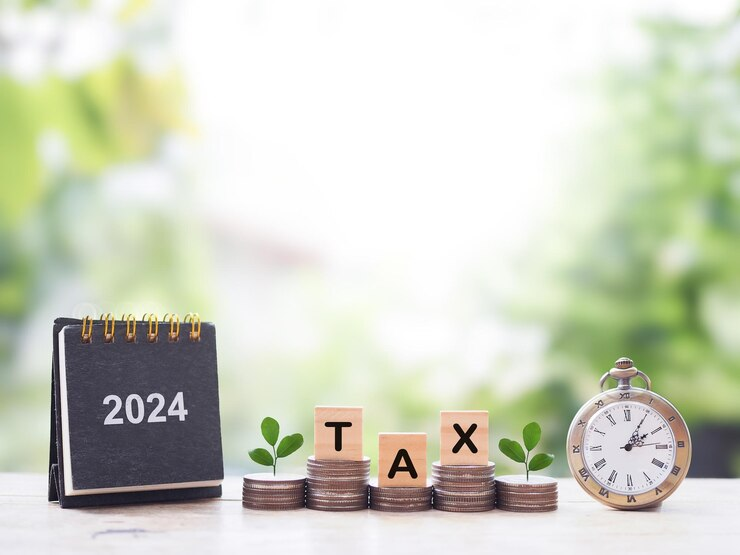Retirement planning is a crucial financial objective that requires careful consideration and strategic investment choices. Among the various investment options available, mutual funds stand out as a popular and effective way to build a retirement corpus. This comprehensive guide will explore the top mutual funds for retirement planning in 2024, providing you with the insights needed to make informed decisions and secure your financial future.
Why Choose Mutual Funds for Retirement?
Mutual funds are an attractive option for retirement planning due to their potential for capital appreciation, professional management, and diversification benefits. Here’s why mutual funds are ideal for retirement:
- Diversification: Mutual funds spread investments across various asset classes, reducing risk and increasing potential returns.
- Professional Management: Fund managers with expertise manage mutual funds, making investment decisions on behalf of investors.
- Liquidity: Unlike other retirement savings options, mutual funds offer liquidity, allowing you to redeem your investments when needed.
- SIP Option: Systematic Investment Plans (SIPs) allow you to invest regularly, making it easier to build a retirement corpus over time.
Types of Mutual Funds Suitable for Retirement
When planning for retirement, it’s essential to select the right type of mutual funds that align with your risk tolerance and time horizon. The following are the primary categories of mutual funds suitable for retirement planning:
- Equity Mutual Funds
Equity mutual funds invest primarily in stocks and are suitable for long-term wealth creation. These funds are ideal for investors with a higher risk appetite and a longer investment horizon.
- Hybrid Mutual Funds
Hybrid mutual funds invest in a mix of equities and debt instruments, offering a balanced approach. They are suitable for investors looking for a blend of growth and stability in their retirement portfolio.
- Debt Mutual Funds
Debt mutual funds invest in fixed-income securities like bonds and treasury bills. These funds are suitable for conservative investors who prioritize capital preservation and lower risk.
Criteria for Selecting the Best Retirement Mutual Funds
Selecting the right mutual funds for retirement requires evaluating various factors. Here are key criteria to consider:
- Historical Performance
While past performance is not indicative of future results, it provides insights into the fund’s consistency and ability to generate returns. Look for funds with a strong track record over different market cycles.
- Expense Ratio
The expense ratio is the fee charged by the fund for managing your investments. Lower expense ratios mean more of your money is invested, leading to better long-term returns.
- Fund Manager Expertise
The experience and track record of the fund manager play a crucial role in the fund’s performance. Choose funds managed by seasoned professionals with a history of navigating market volatility.
- Risk-Adjusted Returns
Risk-adjusted returns measure the returns generated by a fund relative to the amount of risk taken. This metric helps you understand how well the fund performs in relation to its risk. Funds with higher risk-adjusted returns are generally better suited for long-term retirement planning.
- Consistency of Returns
Consistency is key when selecting mutual funds for retirement. Look for funds that have consistently outperformed their benchmark over different time periods, particularly during market downturns. This indicates the fund’s ability to protect and grow your investments over the long term.
- Investment Horizon and Retirement Goals
Your investment horizon and retirement goals should guide your fund selection. Equity funds are suitable for those with a long-term horizon, while hybrid or debt funds may be better for those closer to retirement or with a lower risk appetite.
- Fund Size and AUM (Assets Under Management)
The size of the fund and its AUM can also be an indicator of its stability and popularity among investors. Larger funds tend to have more resources for research and portfolio management, but it’s also important to ensure that the fund’s size doesn’t impede its flexibility.
Top Mutual Funds for Retirement Planning in 2024
Based on the above criteria, here are some of the top mutual funds to consider for retirement planning in 2024. We’ll categorize them into equity, hybrid, and debt funds to help you choose according to your risk tolerance and retirement timeline.
| Fund Name | Category | 1-Year Return | 3-Year Return | 5-Year Return | Expense Ratio | Why Consider |
| Mirae Asset Large Cap Fund | Large-Cap Equity | 17.2% | 20.5% | 18.7% | 0.54% | Focuses on large-cap stocks with a strong track record, making it suitable for long-term retirement goals. |
| Axis Bluechip Fund | Large-Cap Equity | 16.8% | 18.4% | 17.9% | 0.60% | With its focus on quality large-cap companies, Axis Bluechip Fund offers stability and growth, ideal for retirement planning. |
| ICICI Prudential Value Discovery Fund | Value-Oriented Equity | 15.3% | 19.1% | 17.4% | 1.27% | The value-based approach helps in identifying undervalued stocks with growth potential, making it a good fit for long-term wealth accumulation. |
Top Hybrid Mutual Funds for Retirement
| Fund Name | Category | 1-Year Return | 3-Year Return | 5-Year Return | Expense Ratio |
| HDFC Hybrid Equity Fund | Aggressive Hybrid | 15.6% | 18.0% | 16.2% | 1.13% |
| ICICI Prudential Equity & Debt Fund | Balanced Hybrid | 14.9% | 17.5% | 15.8% | 1.25% |
| SBI Equity Hybrid Fund | Aggressive Hybrid | 16.1% | 17.2% | 16.0% | 0.94% |
Top Debt Mutual Funds for Retirement
| Fund Name | Category | 1-Year Return | 3-Year Return | 5-Year Return | Expense Ratio | |
| SBI Magnum Gilt Fund | Gilt Fund | 8.2% | 9.7% | 8.5% | 0.97% | |
| HDFC Corporate Bond Fund | Corporate Bond Fund | 7.8% | 9.2% | 8.4% | 0.43% | |
| ICICI Prudential All Seasons Bond Fund | Dynamic Bond | 8.4% | 9.3% | 8.6% | 1.23% |
The Importance of SIP in Retirement Planning
Systematic Investment Plans (SIPs) are a powerful tool for retirement planning. By investing a fixed amount regularly, SIPs help you build a significant corpus over time without the need to time the market. Here’s why SIPs are crucial for retirement planning:
- Rupee Cost Averaging: SIPs mitigate the impact of market volatility by averaging out the purchase cost of units.
- Discipline: Regular investments through SIPs instill a habit of saving and investing, which is essential for long-term financial goals.
- Compounding: SIPs benefit from the power of compounding, where the returns earned on your investment generate further returns, leading to exponential growth over time.
SIP Strategy for Retirement
When planning your SIP strategy for retirement, consider the following:
- Start Early: The earlier you start, the more time your investments have to grow, thanks to compounding.
- Increase SIP Amount: As your income grows, consider increasing your SIP contributions to accelerate corpus growth.
- Stay Consistent: Avoid the temptation to pause or stop your SIPs during market downturns. Consistency is key to long-term success
Conclusion
Retirement planning is a lifelong process that requires careful consideration, disciplined saving, and strategic investment decisions. By choosing the right mutual funds and employing a well-thought-out investment strategy, you can build a substantial retirement corpus that provides financial security in your golden years.


















